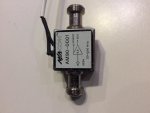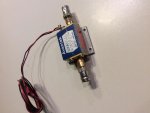N0ZPK
Member
I found a couple of signal amplifiers in a junk box I had, I want to use a discone antenna for receiving air and milcomms. I am wanting to know if these will work cause I know a discone has no gain.I haven’t been able to find much data about them, here’s a couple of pics I took, the Avantek specs are UTA-568M 5-1000MHZ @24VDC, and if they are good to use should they be mounted close to the antenna or close to the receiver, coax is LMR400.. Hopefully they will show.
Thanks for any help,
Thanks for any help,



